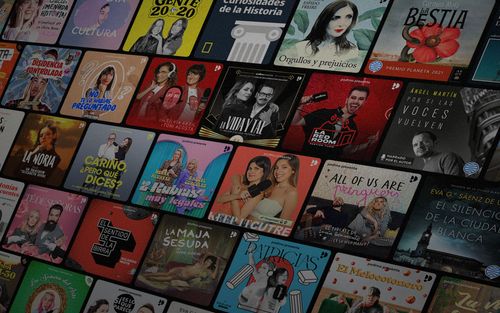Constraint Induced Therapy: Part II
The NOGGINS AND NEURONS Podcast - Ein Podcast von Stroke & Brain Injury

CONSTRAINT INDUCED THERAPY II OVERVIEW: Pete: Yeah, although be forewarned that if you have questions, we may read it on the air and, uh...on the air! Are we on the air? I don’t even know... Deb: Like WKRP In Cincinnati. Pete: Hey ‘now for the big sounds of the big town where the daddy-o of the radio in a city so nice they named it twice. New York, New York.’ I was communications.... Deb: You’ve been waiting your whole life for this opportunity! Pete: I used to practice that... EPISODE SUMMARY: This episode of NOGGINS & NEURONS: Stroke and TBI Recovery Simplified is part 2 of Constraint Induced Therapy (CIT). Part 2 begins with Pete reiterating important points covered in Episode 1, including: Commitment is required for participation in a CIT program When NOT to wear the constraint: when ambulating, navigating stairs, bathing/washing, toileting and driving Review of frequently asked questions about CIT including compliance, dropout rate; that CIT is not an easy intervention but is worth it, hand dominance, location of infarct, use in acute stroke The conversation further evolved into: Research on the use of CIT at the acute stage and the VECTORS trial When it’s safe to begin CIT Using Constraint Induced Therapy during the chronic phase – plateaus, taking breaks and having a strategic recovery plan What happens to the weaker side when the training focus is on the stronger side during the first 10 days following brain injury and why it’s important to limit compensation What happens to the brain with intense exercise during the first 7 days – what intensity looks like and examples of how to determine intensity levels Using CIT with children Reimbursement for modified Constraint Induced Therapy Socialization, Groups, friendly competition and CIT Starting a CIT program: benefits to survivors and clinics All about lower extremity CIT, including how it’s done and figuring out who it’s appropriate for This engaging conversation goes deeper into Constraint Induced Therapy. Survivors, caregivers and clinicians alike will benefit... As always, we want to hear your top takeaways! LINKS TO ARTICLES, BOOKS AND OTHER IMPORTANT INFORMATION: The Brain Science Podcast with Ginger Campbell, MD. Episode 119 with Dr. Edward Taub Episode 120 with Dr. Edward Taub Lee, H. J., Moon, H. I, Kim, J. S., & Yi, T. I. (2019). Is there a dose-dependent effect of modified constraint-induced movement therapy in patients with hemiplegia? NeuroRehabilitation (Reading, Mass.); 45 (1), 57-66. doi: 10.3233/NRE-192721 Eras-Garcia, R., Matuti, G., Carrijo, D, Lea ̃o, A., & Cruz, D. (2019). Effects of modified constraint-Induced movement therapy on post-stroke functional and occupational performance. Archives of Physical Medicine and Rehabilitation (Late Breaking Research Poster). https://doi.org/10.1016/j.apmr.2019.10.043 Scott, S., Shade, H., Crowell, M, Lynch, M., Arpadi, L., Levine, A., Muro, A., et al. (2020). Use it or lose it? The diffusion of Constraint-Induced and Modified Constraint-Induced Therapy into OT practice. DOI: 10.5014/ajot.2020.74S1-PO2716 The EXCITE trial: Large multi-site constraint induced therapy trial Wolf SL, Winstein CJ, Miller JP, Taub E, Uswatte G, Morris D, Giuliani C, Light KE, Nichols-Larsen D; EXCITE Investigators. Effect of constraint-induced movement therapy on upper extremity function 3 to 9 months after stroke: the EXCITE randomized clinical trial. JAMA. 2006 Nov 1;296(17):2095-104. PubMed PMID: 17077374. Page, S.J., Levine, P., Sisto, S.A., Bond, Q., Johnston, M.V. Patients’ and therapists’ opinions of constraint-induced therapy. Clin Rehabil 2002; 16 (1): 55-60 Page SJ, Boe S, Levine P. What are the "ingredients" of modified constraint-induced therapy? An evidence-based review, recipe, and recommendations. Restor Neurol Neurosci. 2013 Feb 8. A journal article about the first time constraint induced therapy was tried in humans, by Lawrence Ince, MD. Ince J. Escape and avoidance conditioning of response in the p

